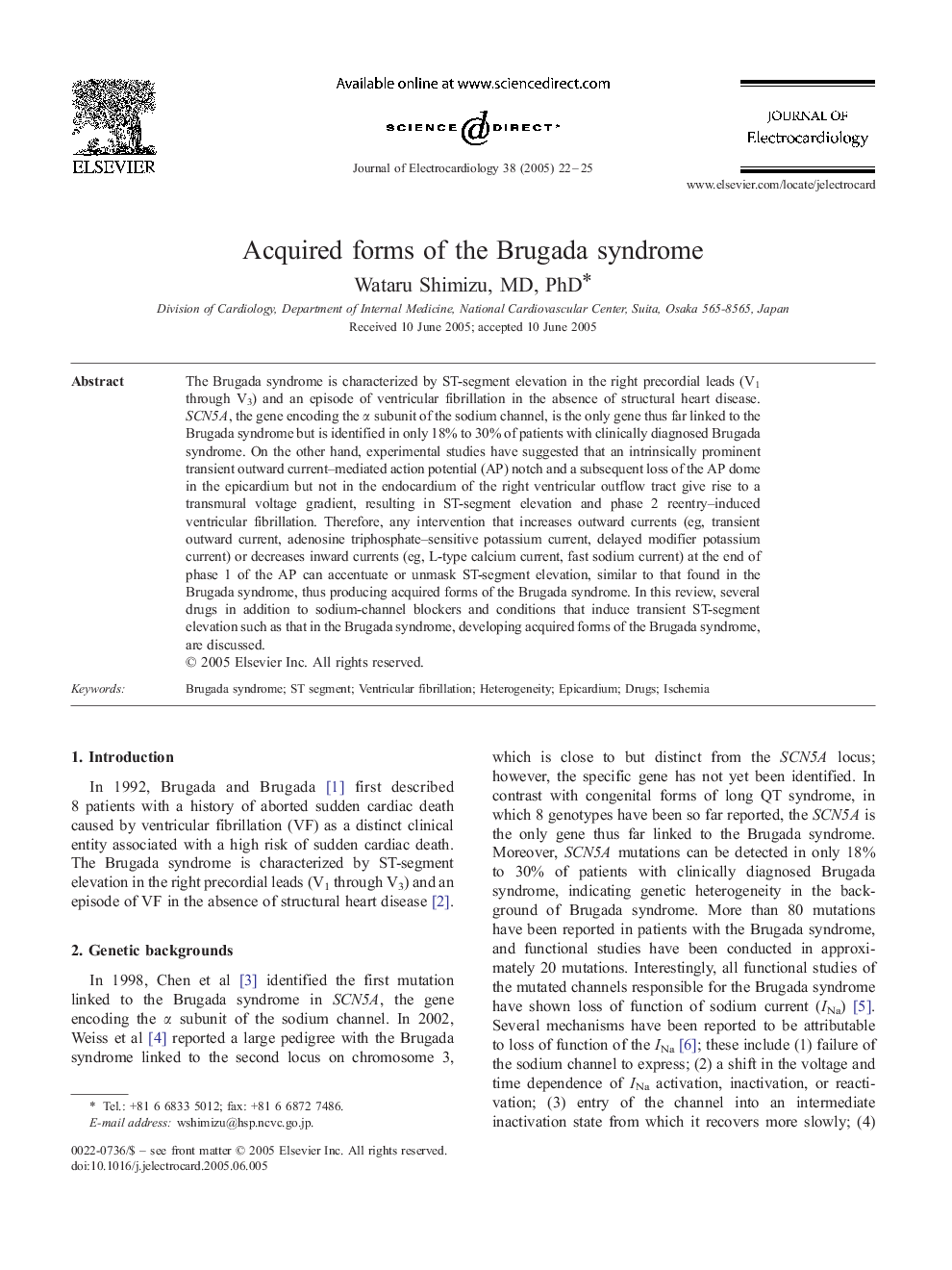| کد مقاله | کد نشریه | سال انتشار | مقاله انگلیسی | نسخه تمام متن |
|---|---|---|---|---|
| 9171643 | 1178922 | 2005 | 4 صفحه PDF | دانلود رایگان |
عنوان انگلیسی مقاله ISI
Acquired forms of the Brugada syndrome
دانلود مقاله + سفارش ترجمه
دانلود مقاله ISI انگلیسی
رایگان برای ایرانیان
کلمات کلیدی
موضوعات مرتبط
علوم پزشکی و سلامت
پزشکی و دندانپزشکی
کاردیولوژی و پزشکی قلب و عروق
پیش نمایش صفحه اول مقاله

چکیده انگلیسی
The Brugada syndrome is characterized by ST-segment elevation in the right precordial leads (V1 through V3) and an episode of ventricular fibrillation in the absence of structural heart disease. SCN5A, the gene encoding the α subunit of the sodium channel, is the only gene thus far linked to the Brugada syndrome but is identified in only 18% to 30% of patients with clinically diagnosed Brugada syndrome. On the other hand, experimental studies have suggested that an intrinsically prominent transient outward current-mediated action potential (AP) notch and a subsequent loss of the AP dome in the epicardium but not in the endocardium of the right ventricular outflow tract give rise to a transmural voltage gradient, resulting in ST-segment elevation and phase 2 reentry-induced ventricular fibrillation. Therefore, any intervention that increases outward currents (eg, transient outward current, adenosine triphosphate-sensitive potassium current, delayed modifier potassium current) or decreases inward currents (eg, L-type calcium current, fast sodium current) at the end of phase 1 of the AP can accentuate or unmask ST-segment elevation, similar to that found in the Brugada syndrome, thus producing acquired forms of the Brugada syndrome. In this review, several drugs in addition to sodium-channel blockers and conditions that induce transient ST-segment elevation such as that in the Brugada syndrome, developing acquired forms of the Brugada syndrome, are discussed.
ناشر
Database: Elsevier - ScienceDirect (ساینس دایرکت)
Journal: Journal of Electrocardiology - Volume 38, Issue 4, Supplement, October 2005, Pages 22-25
Journal: Journal of Electrocardiology - Volume 38, Issue 4, Supplement, October 2005, Pages 22-25
نویسندگان
Wataru MD, PhD,